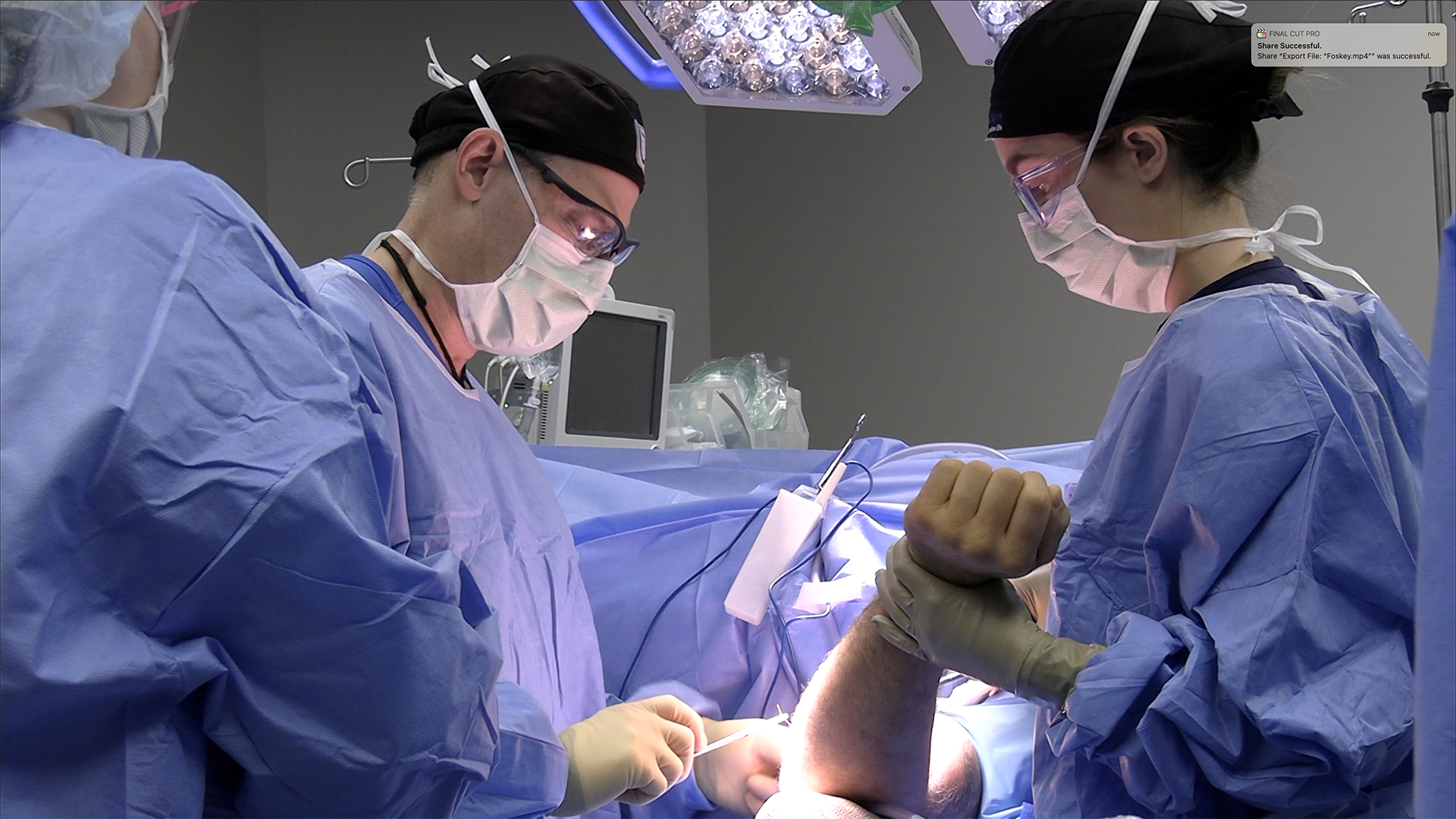
Elbow Surgery
Elbow injuries are all too common due to accidents or sports injuries. In some cases, fractures require surgery for proper setting and healing. Ligaments and tendons, such as the UCL or bicep tendons, may require repair due to the slow-healing nature of those injuries.
The elbow joint itself is a complex hinge joint that can suffer repetitive motion injuries or degradation due to age. In some cases, total elbow joint repair or replacement may be necessary to restore range of motion and reduce pain.
The surgical team at Barbour Orthopaedics offers an array of elbow surgery options, including cutting-edge minimally invasive arthroscopic elbow surgery solutions.
Elbow Arthroscopy
Elbow arthroscopy is an ideal option for evaluating and treating all types of elbow damage. As with other types of arthroscopic surgery, small surgical instruments and diagnostic tools are inserted through tiny incisions, allowing the surgeon easy access to all the relevant joints, tendons, and ligaments while causing minimal damage to the surrounding tissues.
Common ways an Elbow injury occurs
Trauma
Trauma is a leading cause of fractures and dislocations. Falls, especially on an outstretched hand, or sudden excessive force can cause a multitude of injuries.
Repetitive Use
Repetitive use is a common cause of tendon and ligament injuries in the elbow. Manual laborers (carpenters, machinists) and typists are particularly at risk. Patients that play racquet sports (tennis, racquetball) and golf are also at risk for developing overuse injuries.
Degeneration
Over time, our bodies age. This includes the bones, muscles, and tendons of the elbow. Inflammation from “wear and tear” of the joints results in arthritis, whereas degeneration of the muscles and tendons results in tears that do not heal without surgical repair.
Elbow arthroscopy is especially effective for diagnosing and treating loose bodies, such as bone chips or cartilage, that are causing abrasion and pain in the elbow. It’s also an effective surgical procedure for removing scar tissue or bone spurs, both of which can cause damage and limit elbow mobility.
Arthroscopy can also be used to treat osteoarthritis, rheumatoid arthritis, and osteochondritis dissecans.
Total Elbow Replacement
Total elbow replacement is usually prescribed to address various types of arthritis or symptoms of arthritis affecting the elbow. A total elbow replacement is only recommended after all potential non-surgical remedies have been exhausted.
Total elbow replacement may also be recommended if a tumor is present in the elbow joint or for patients who have had previous elbow surgery performed.
All types of elbow surgery are delicate due to the limited area the elbow joint occupies. The muscles, tendons, and ligaments, as well as the ulnar nerve, must be carefully moved to prevent damage during the procedure.
The damaged parts of the joint, namely the surfaces of the humerus, radius, and ulna, must be removed. Prosthetics are attached in the place of any removed bone and the surgeon will test the patient’s range of motion. The surgeon will then move all nerves, ligaments, tendons, and muscles back into place before suturing the skin closed.
UCL Reconstruction
The ulnar collateral ligament (UCL) connects the ulna bone and the humerus bone. It’s an important stabilizing ligament, especially for activities where the arms are moved up above the body, such as when throwing or reaching for objects on high shelves.
UCL injuries are common sports injuries and can have significant negative consequences for athletes who rely on pitching or throwing motions for their livelihood. Torn UCLs often require surgery to truly fix. The procedure sometimes referred to as “Tommy John Surgery”, entails taking tendon from elsewhere in the body and using it to reconnect the ulna and humerus bones.
Repairing a torn UCL is delicate work, which is why it is ideally trusted by an experienced orthopaedic surgeon such as Dr. Barbour.
Elbow Ligament Reconstruction
Patients who have suffered a ligament rupture in their elbow may be candidates for elbow ligament reconstruction surgery. Like UCL reconstruction, a donor tendon from elsewhere in the body will be moved to the elbow. Holes are drilled in the upper arm and forearm bones, through which the donor’s tendon is threaded. The tendon is then sutured to the bone’s surface before the surgical incision is closed. Rehabilitation is usually necessary to restore optimal range of motion and strength to the elbow.
Elbow Tendon and Ligament Repair
One of our practice’s specialties is treating sports injuries. Our doctors and surgeons have helped countless professional, collegiate, and high school athletes get back in the game after fractures and torn ligament and tendon injuries. The elbow joint is hugely important for many sports, especially ones where throwing or pitching is involved.
Injuries to the elbow are quite common, including conditions like tennis elbow and golfer’s elbow. Both of those conditions are repetitive stress and overuse injuries, and in many cases are hard to prevent.
Dr. Barbour and his team perform a number of surgical procedures to repair repetitive strain and overuse injuries.
Tendon Debridement: The orthopaedic surgeon will delicately shave off damaged tissue on the tendon and clean it to restore optimal function.
Tendon Release: Tendon release involves splitting the damaged flexor or extensor tendon in the elbow where it attaches to the bone. Scar tissue and overgrowth will be removed to restore freedom of movement.
